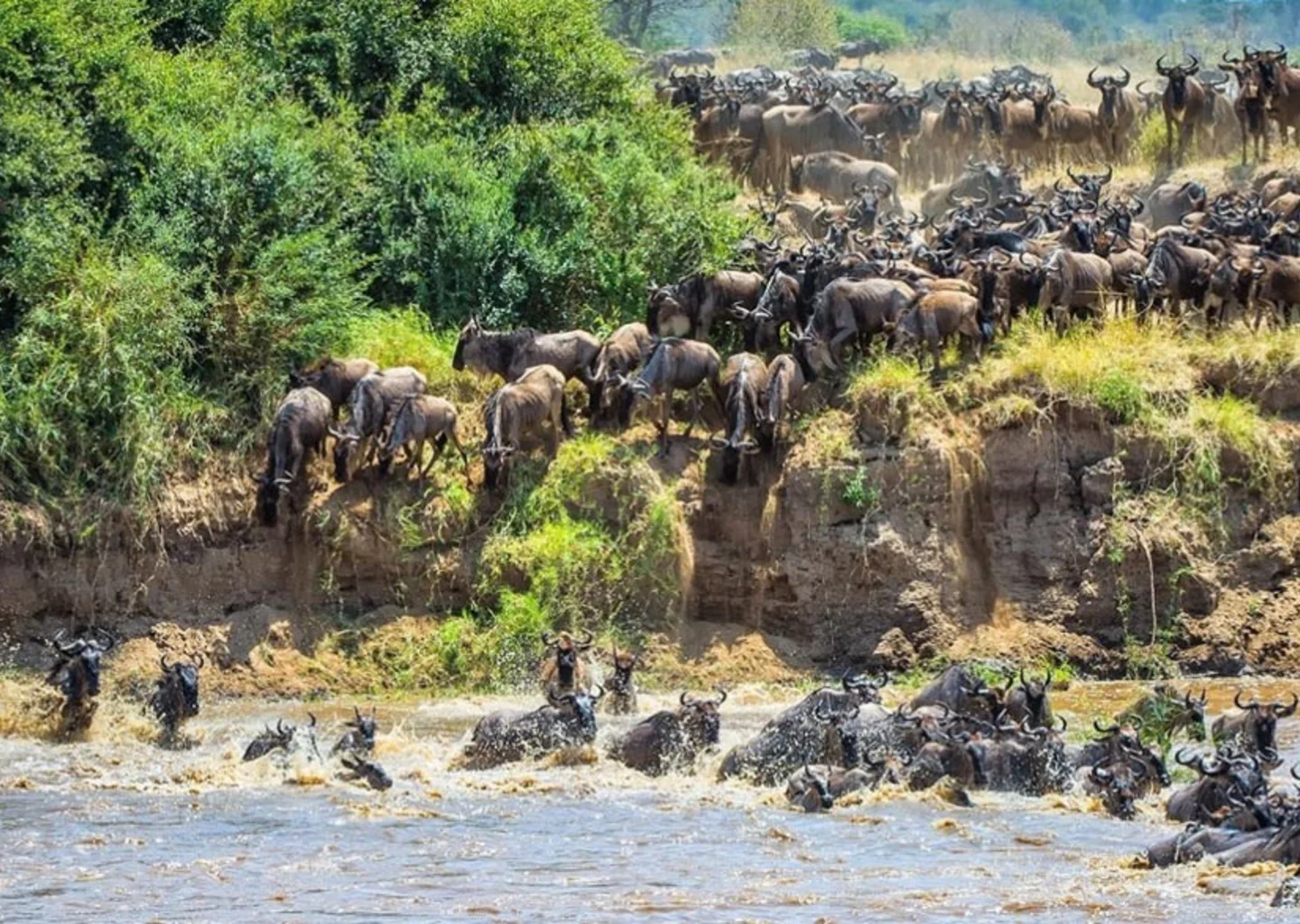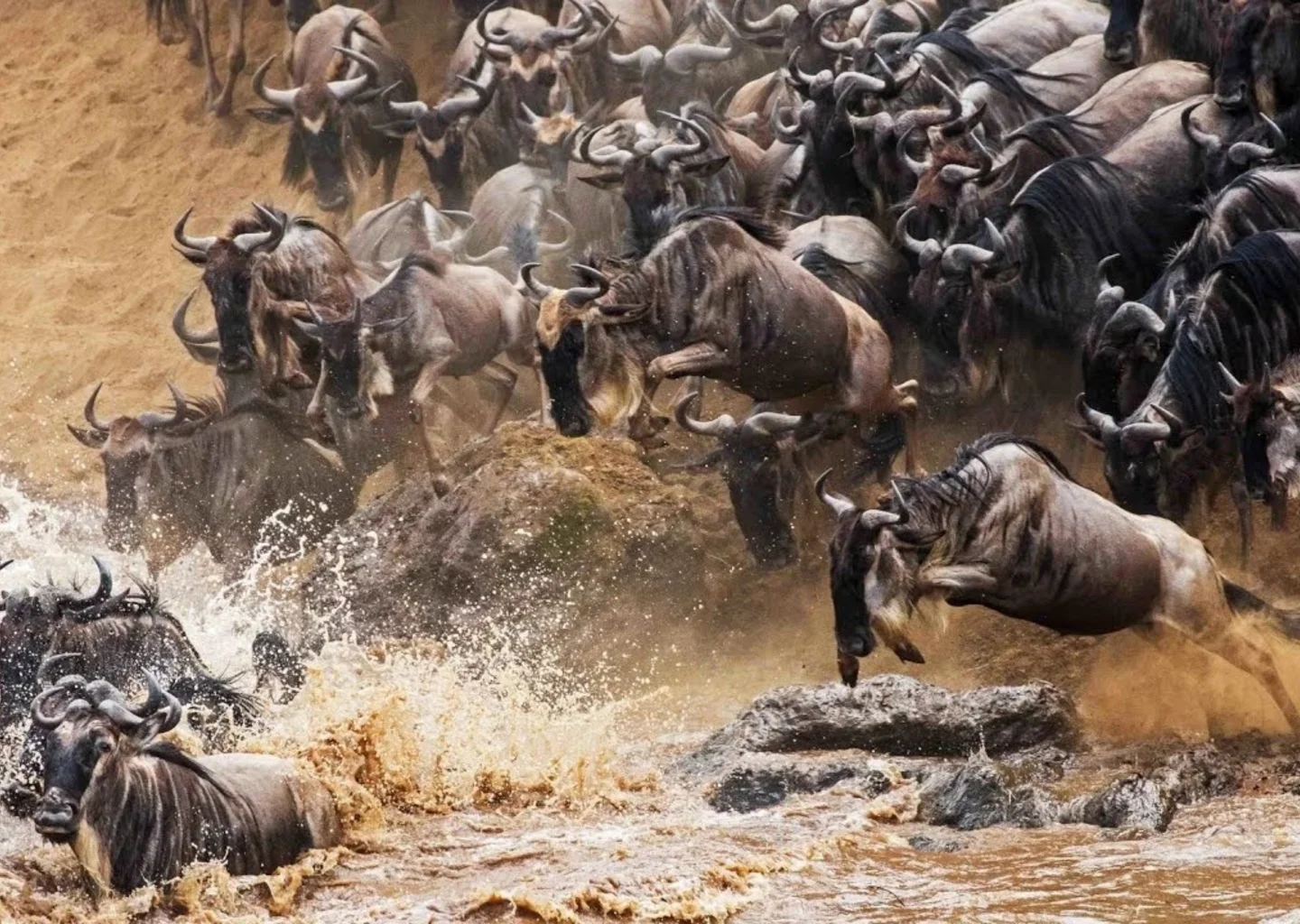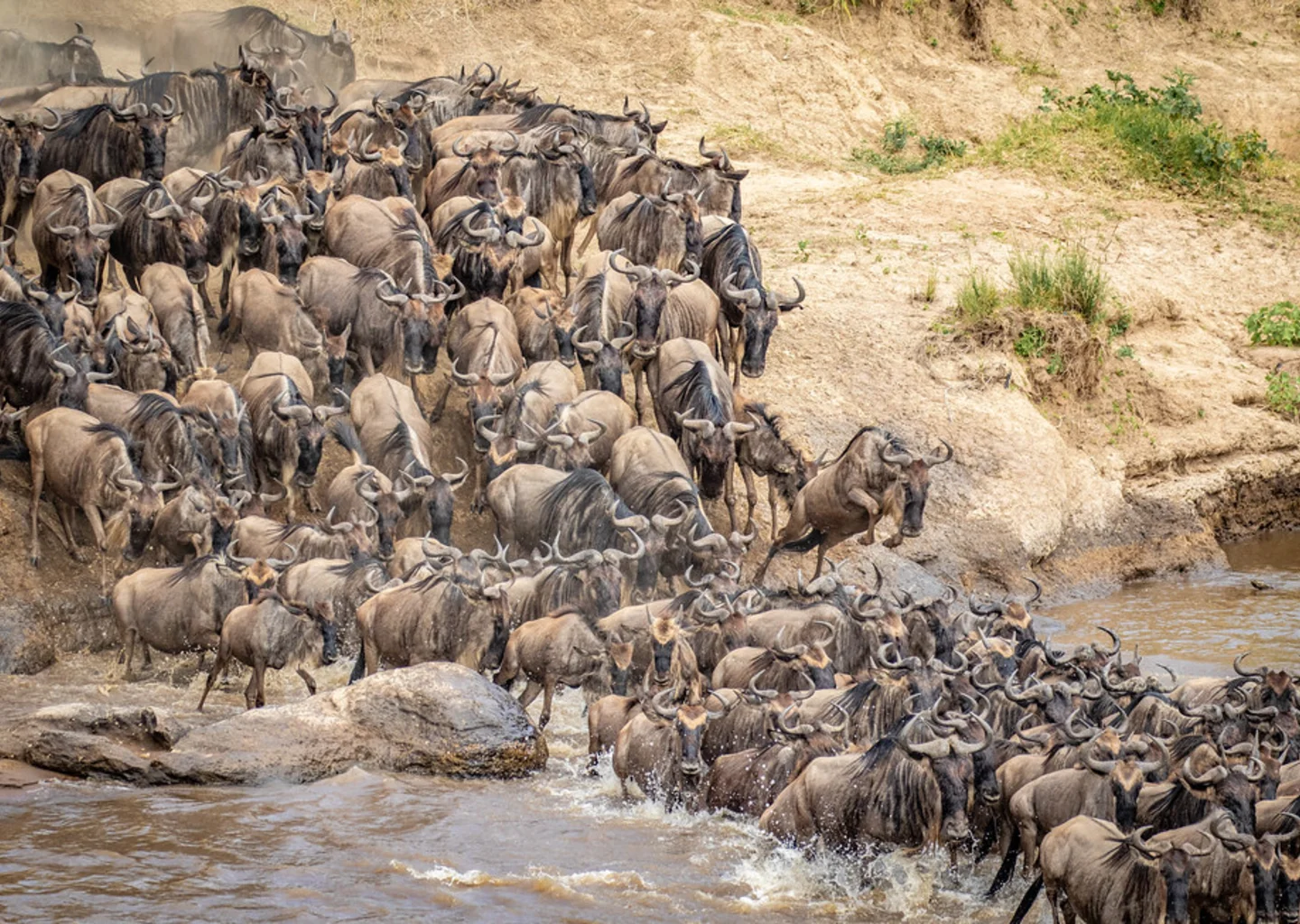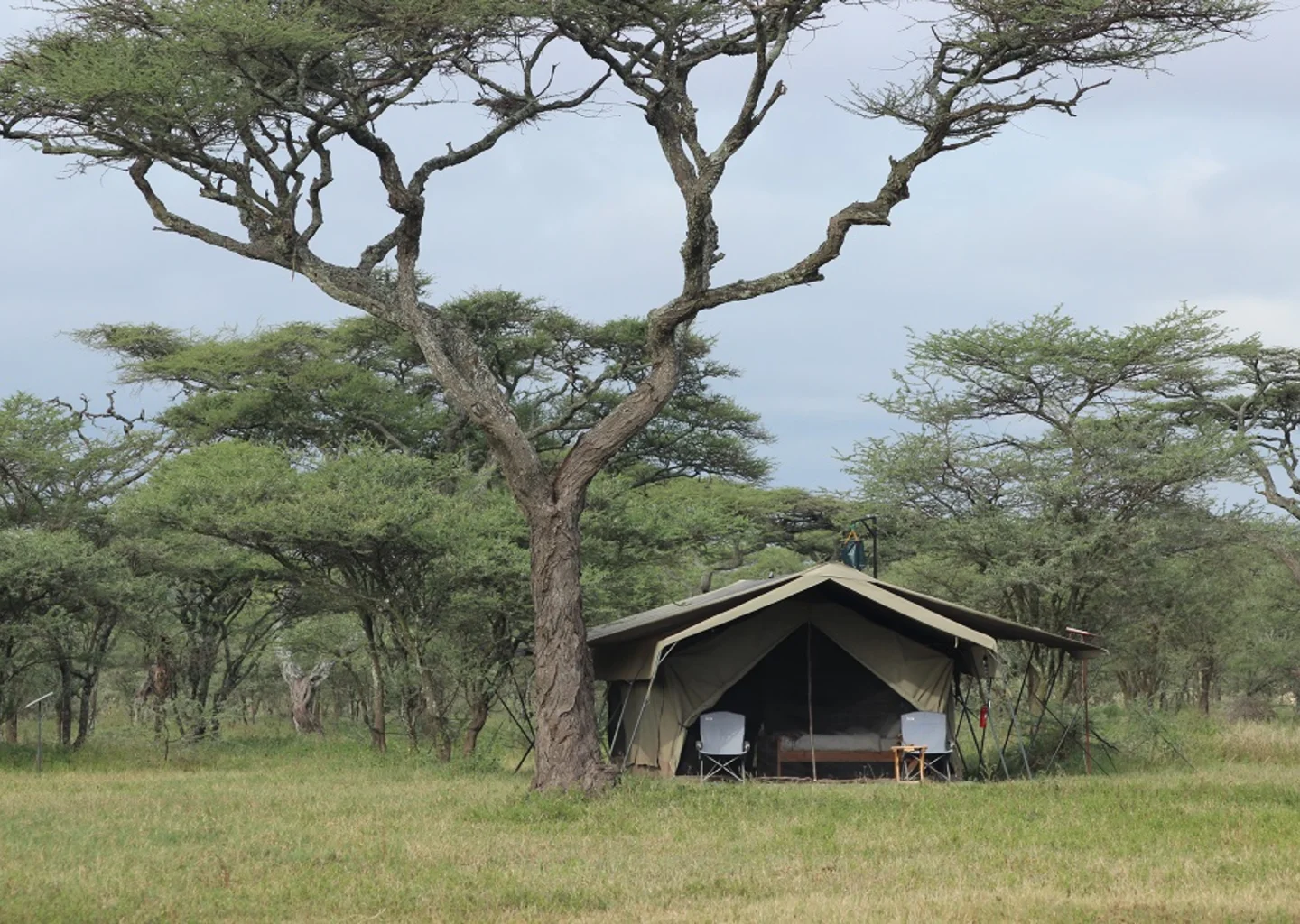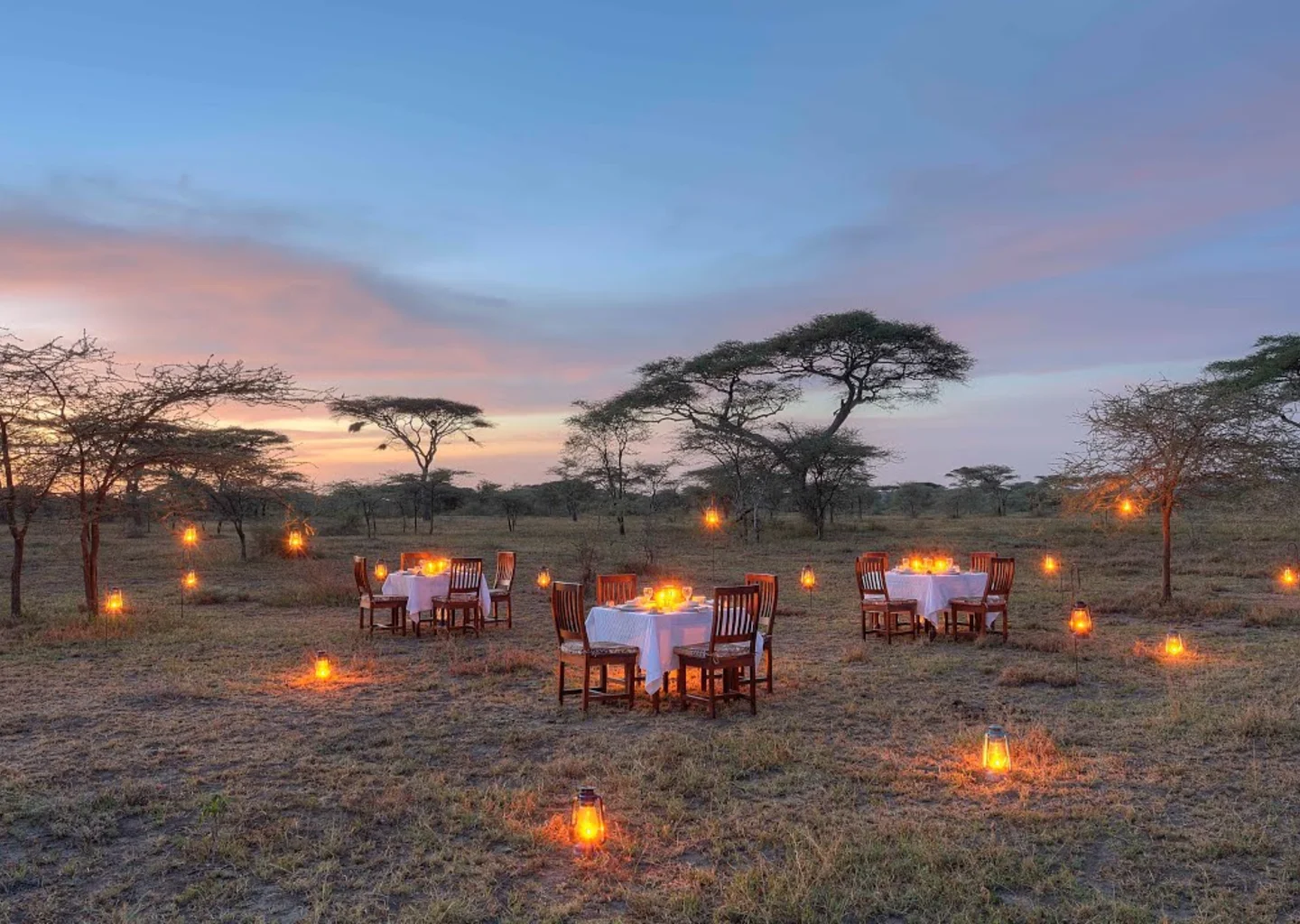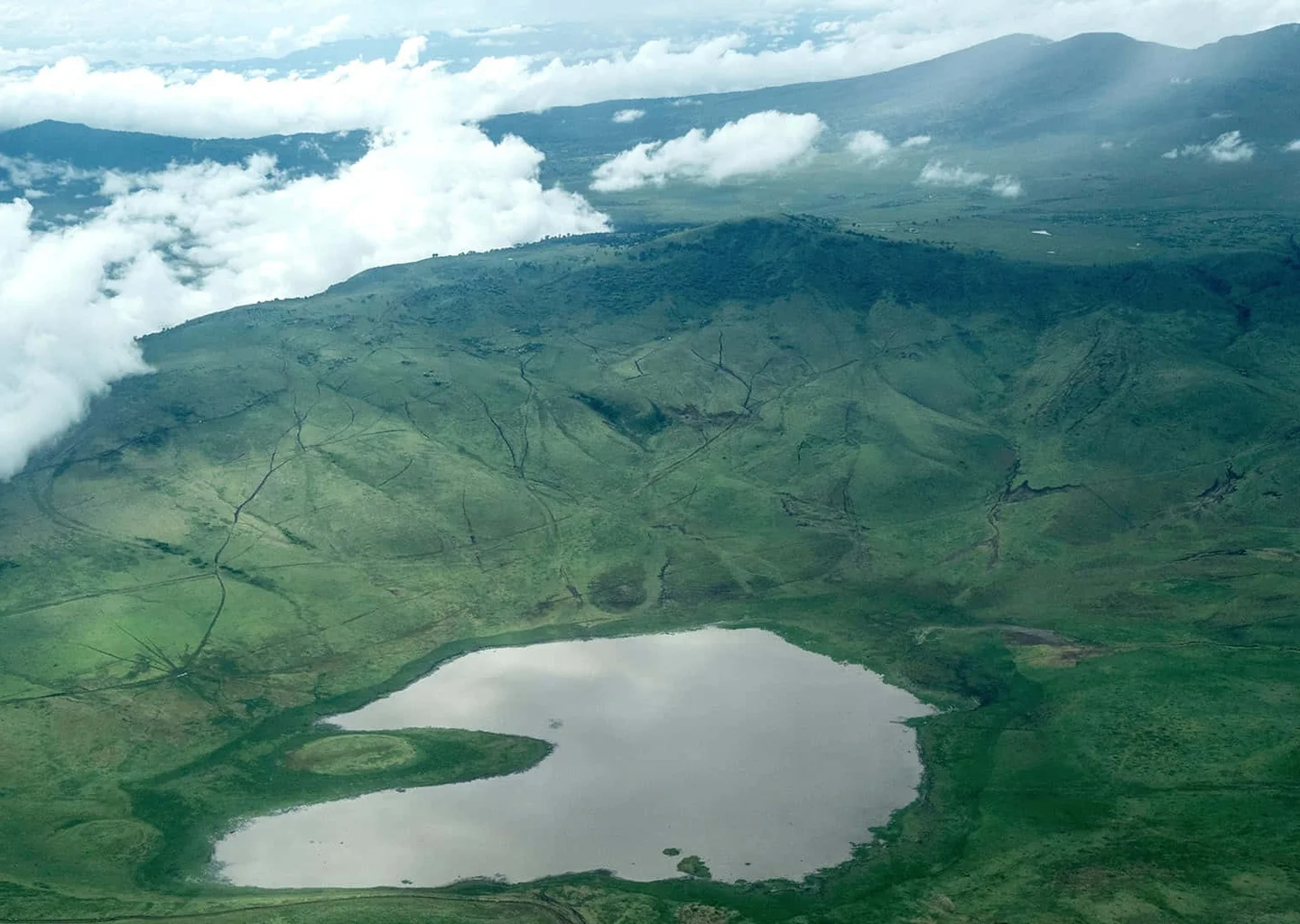Discover
Wildebeest Migration
The Great Wildebeest Migration
Best Time to See the Great Migration
The Great Migration is a year-round spectacle, but the experience differs depending on where the herds are in their journey.
-
December to March – The herds gather in the Southern Serengeti and Ngorongoro Conservation Area, where the short-grass plains provide fresh grazing. This is also the calving season, when over half a million wildebeest are born, attracting predators and offering dramatic wildlife encounters.
-
April to May – As the rains fall, the herds move north and west across the Serengeti. This is a quieter time for visitors, but the landscapes are lush and teeming with life.
-
June to July – The wildebeest begin to mass in the Western Corridor, preparing for the famous Grumeti River crossing, where crocodiles lie in wait.
-
July to October – The herds push further north to the Mara River, creating one of nature's most iconic wildlife spectacles as they cross into Kenya's Masai Mara.
-
November – The wildebeest return south into the Serengeti, completing the cycle.
Where you stay and when you travel will determine what stage of the migration you witness — whether it's the drama of a river crossing or the miracle of calving season.
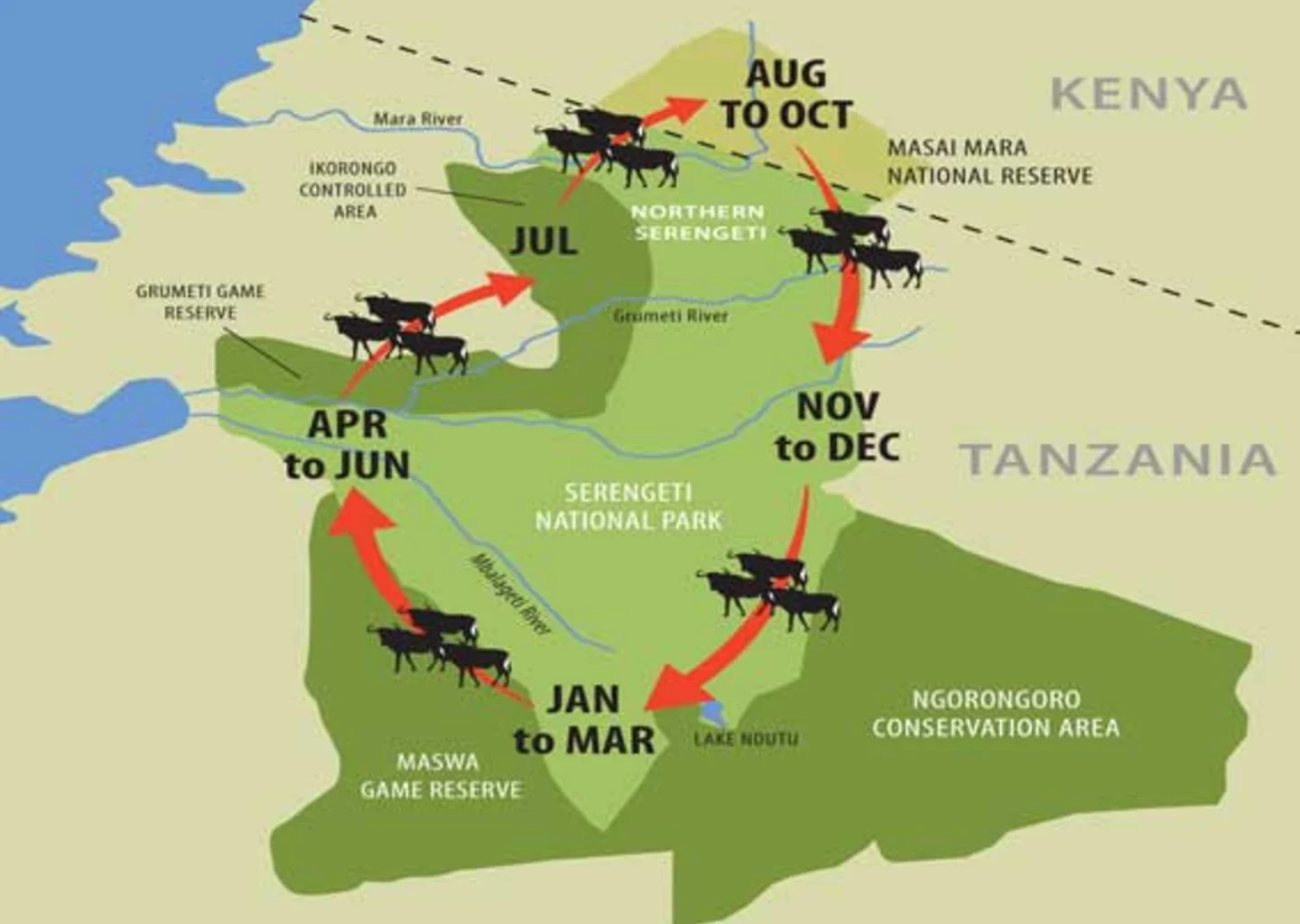

Ndutu Area
December – March
Situated on the border between the southern Serengeti plains and the Ngorongoro Conservation Area, Ndutu is blessed with nutrient-rich volcanic soils, the legacy of the Ngorongoro Mountain's ancient eruptions. These fertile plains provide the perfect conditions for the wildebeest calving season.
Each year, when the rains fall and the grasses are lush, the herds gather here to give birth. In just a few short weeks, hundreds of thousands of calves are born, often in synchrony, overwhelming predators with sheer numbers. Wildebeest can even delay calving for weeks until conditions are right, an extraordinary survival strategy.
Ndutu is also one of the few areas where off-road game drives are permitted, offering photographers and wildlife enthusiasts an exceptional opportunity to capture this dramatic event while always respecting safe and responsible viewing distances.
Western Corridor
April – June
As the herds press northwards, they funnel into the Western Corridor, where the Grumeti River poses the first major challenge of their journey. While smaller in scale than the Mara River crossing, the Grumeti crossing is no less dramatic. Here lurk the formidable Nile crocodiles, the largest in the world, waiting patiently for their chance at a meal.
The atmosphere is charged with tension as wildebeest and zebras hesitate at the water's edge, before surging across in chaotic bursts. The drama of predator and prey unfolds before your eyes, making this one of the most thrilling moments of the migration.
For an unforgettable perspective, combine this experience with a Serengeti hot air balloon safari. Float above the herds at sunrise, then touch down for a champagne breakfast in the wilderness — a magical complement to the intensity of the river crossing.
Mara River
July – October
The most iconic stage of the migration unfolds in the northern Serengeti, where vast herds gather to cross the mighty Mara River. This is the moment most travelers dream of — watching tens of thousands of wildebeest surge across the river in a frantic display of survival.
The crossings are chaotic, often marked by panic, confusion, and raw drama as predators seize their chance amidst the turmoil. For many, witnessing the Mara River crossing is the pinnacle of an African safari, a once-in-a-lifetime event etched forever in memory.
Where to Stay
To witness the Mara River crossings at their best, mobile camps such as Lemala Kuria Hills Lodge or Sayari Camp place you right at the heart of the action. For a more adventurous feel, Mara Under Canvas offers seasonal tented accommodations, allowing you to stay close to the migratory herds in comfort and style.

